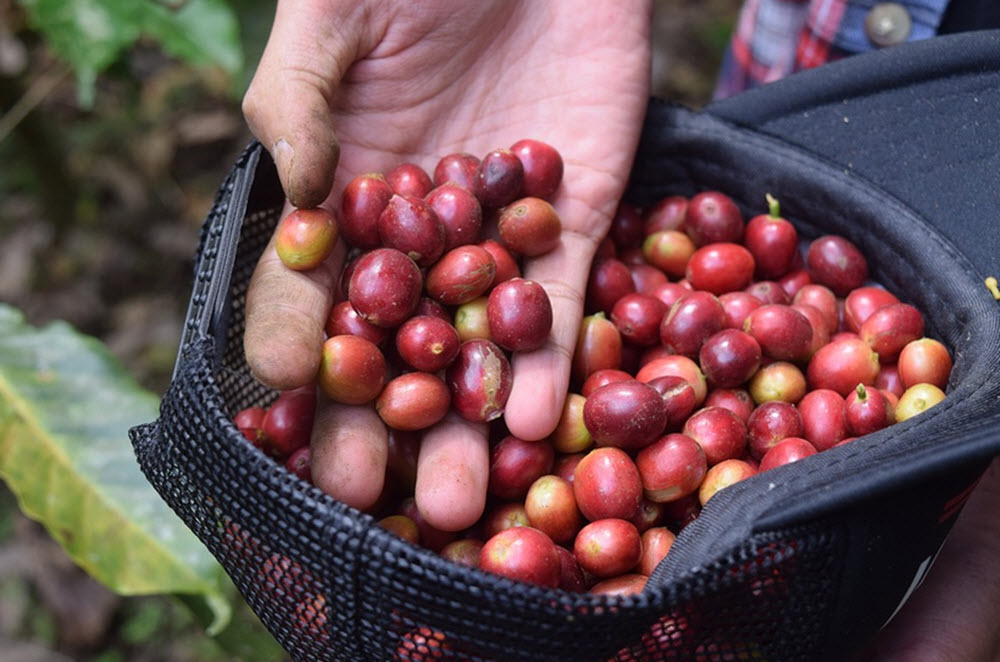Coffea canephora
Contents
Coffea canephora robusta, commonly known as robusta coffee, is the second-most cultivated coffee species in the world. (#1 is C. arabica.)
The species Coffea canephora has two main varieties, C. c. robusta and C. c. nganda, and it is the robusta that is widely cultivated globally.
Coffea arabica makes up about 60% of the global coffee production, while most of the remaining production is Coffea canephora robusta (robusta coffee). The Robusta coffee plant is less susceptible to pests and disease and yields a larger crop than the Arabica coffee plant.
The average Robusta bean contains 3-7% sugar while that number for the average Arabica bean is just 6-9%. Compared to C. arabica, the C. c. robusta bean results in a more caffeinated beverage with less acidity and more bitterness. The bitterness is caused by higher pyrazine content.
Robusta coffee beans are commonly used for espresso blends and instant coffee. There are also many coffee brands that blend Arabica with some Robusta, as the Robusta is both cheaper and brings a desirable earthy flavour and full-bodiedness to the beverage.
When Robusta is included in an espresso blend, it helps with the formation of the espresso´s crema (the foam head). Traditional high-quality Italian espresso blends usually contain around 10-15% Robusta.

Scientific classification
| Kingdom: | Plantae |
| Clade: | Tracheophytes |
| Clade: | Angiosperms |
| Clade: | Eudicots |
| Clade: | Asterids |
| Order: | Gentianales |
| Family: | Rubiaceae |
| Genus: | Coffea |
| Species: | Coffea canephora |
| Subspecies: | Coffea canephora robusta |
Synonym: Coffea canephora var. robusta
Origins
This species of coffee has its origins somewhere in the central or western part of sub-Saharan Africa. A probable site of origin is the upland forests of Ethiopia, whence it spread throughout Western and Central Africa. It grows wild from Liberia in the west to Tanzania in the east, and its southmost wild extremity is in Angola.
Today, it grows naturalised (“ferral”) in many other parts of the world as it has spread from coffee plantations. You can, for instance, encounter naturalised Robusta plants in places such as Borneo, French Polynesia, Jamaica, and Costa Rica.
About the Robusta plant
The Robusta plant is sturdy and has a high resilience against pests and disease compared to the Arabica plant.
Cultivating Robusta coffee
Compared to the Arabica coffee plant, the Robusta is easier to care for and less likely to succumb to pests or disease.
Growth pattern and height
The Robusta plant grows as a shrub or tree, and rarely exceeds 10 meters in height.
Roots
The root system is shallow.
Sun
The Robusta plant wants sun, not shade.
Flowering
This plant flowers irregularly.
Drupes
After flowering, it takes about 10-11 months for the drupes to ripen.
Major Robusta producing countries
As of now, the largest exporter of Robusta coffee is Vietnam, a country that almost exclusively grow Robusta and very little Arabica. Around 40% of the total global production of Robusta takes place in Vietnam.
Brazil, a country that also grows lot of Arabica, accounts for approximately 25% of the world´s total production of Robusta.
Other examples of notable Robusta producing countries are Indonesia, India and Uganda.

